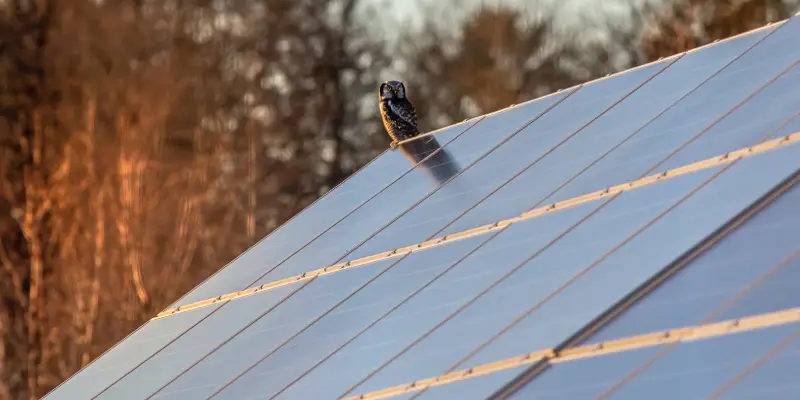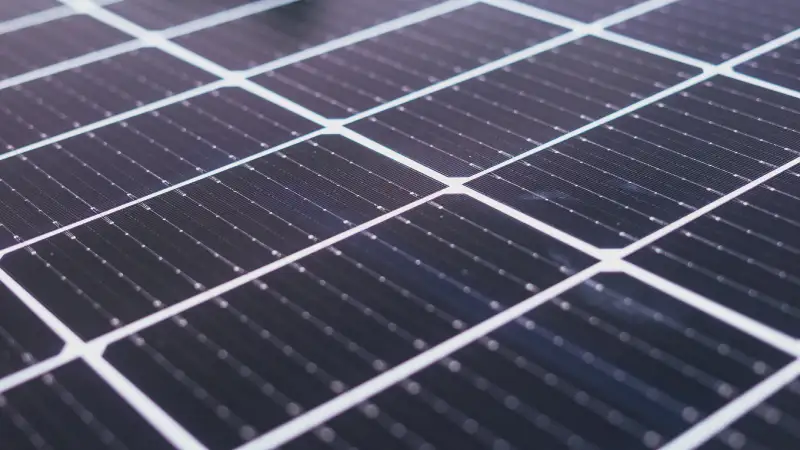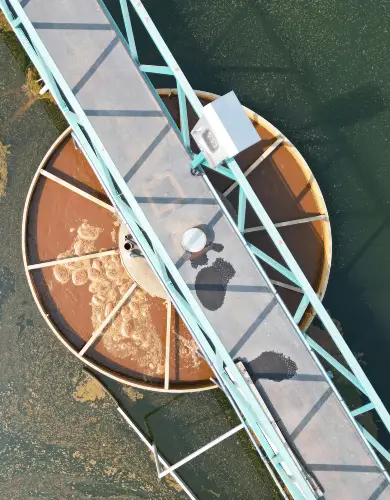Permitting and Regulation for Commercial Solar Panels
Do you want to install solar panels on your business property but don’t know what regulations and permitting challenges you face?
Fret no more! Our comprehensive guide has you covered for the latest rules and regulations governing solar panel installations for businesses.
Contents
- Brief history of solar panel permitting in the UK
- Regulation and permitting for commercial solar panel installations
- Quality and Safety Regulation
- Regulation for Grid-Connected Solar Systems
- Planning Permission for Non-Domestic Solar Panels
- How long does regulation and planning permissions take?
Brief history of solar panel permitting in the UK
There was a time when all solar panel installations required planning permission from the local planning authority.
In a bid to accelerate the rollout of solar power, the government passed legislation in 2008, designating solar panel installations on residential properties as ‘permitted developments’ that don’t require planning permission.
This ease of regulation extended to commercial properties in 2011/2012 for systems up to 50kW, and was further expanded to 1MW in England and Wales (Scottish planning only permits systems of up to 50 kW capacity).
While these changes are beneficial, various conditions must be met to avoid planning permission requirements, and there are safety and performance regulations that all solar panel installations must adhere to, as well as additional ones required if the system is connected to the national grid.
💡 Planning rules for non-domestic solar panels are mostly similar across the UK, except for a few exceptions. For instance, Scottish planning authorities require any system above 50kW or within 3km of an aerodrome to apply for planning permission.
Source: Planning regulation for non-domestic properties in England, Wales and Scotland
Regulation and permitting for commercial solar panel installations

The regulation and permitting required for a commercial solar panel installation can be broken down as follows:
- Quality and Safety Regulation
- Regulation for Grid-Connected Solar Systems
- Planning Permission for Non-Domestic Solar Panels
The key aspects are summarised in the following table:
| Regulations/Permitting | Details |
|---|---|
| MCS-Certification | Required for an SEG Tariff. |
| DNO Permissions | DNO registration is required for a grid connection. |
| CPS Installers | CPS installers can streamline the installation process. |
| Building Regulations | The installation must comply with local building regulations. |
| Planning Permission | Planning Permission or Prior Approval may be needed. |
Quality and safety regulation
These regulations are applicable to all solar panel installations and works, regardless of size, complexity, property type, etc.
Building regulations
Solar panel installations in the UK must comply with local building regulations, particularly concerning structural integrity (Part A) and electrical safety (Part P).
These regulations ensure that roofs can withstand the additional loads imposed by solar panels and help reduce the risk of electrical hazards.
Source: Approved UK Building Regulation Documents
Competent Persons Scheme (CPS)
Installers who are members of a relevant CPS can self-certify that their solar panel installations, along with other components, comply with the regulations. In the absence of CPS membership, installers must seek building regulation approval, a process that can be more laborious.
Source: Approved UK Building Regulation Documents, Guidance on Competent Persons Scheme (UK GOV)
Regulation for grid-connected solar systems
A connection to the local grid allows businesses to purchase electricity from business energy suppliers during prolonged periods without sunny weather. Additionally, small-scale generators can sell excess generated electricity back to the grid through the Smart Export Guarantee scheme. Check out our full guide to find the latest business electricity rates offered by the scheme.
MCS compliance
To participate in solar power grid export through SEG tariffs or other grid integrations, installations must adhere to MCS (Microgeneration Certification Scheme) standards or their equivalent.
These standards ensure the quality, performance, and safety of solar PV systems and are recommended (although not compulsory) in off-grid businesses.
Source: MCS (Sep 2023)
Distribution Network Operator (DNO) agreements
DNOs are responsible for distributing electricity from the national grid to local destinations and are key in maintaining grid stability and safety, especially when adding new solar installations.
Accordingly, all grid-connected solar installations must submit an application to the local distribution network operator. Installations with a peak power capacity under 3.68kWp require a simpler G98 application, while larger installations demand the more detailed G99 application.
💡 With energy storage or vehicle-to-grid systems, the threshold considers the combined microgeneration and storage capacity of 3.68kW.
These applications enable the DNO to assess the installation’s impact on the local grid and identify any necessary adjustments for safe, efficient operation.
These requirements ensure that the DNO can assess the impact of the installation on the local electrical grid and determine if any adjustments or upgrades are necessary for safe and efficient operation.
Note that DNO connection offers are time-limited, and installations must be completed within the specified timeframe. Typically, your solar panel installer will handle these applications.
💡 DNO applications are one of the first tasks undertaken by installers once hired. They are also required for alternative solar power technologies such as solar roof tiles, floating solar or agrivoltaic setups.
Source: Guidance on registering energy devices (UK GOV); ENA – DNO Connection Guidance
Planning permission for non-domestic solar panels

While most standard commercial solar installations qualify as ‘permitted developments’ that don’t require planning permission, they must adhere to specific criteria regarding technology, capacity, size, positioning, and impact on local amenities.
If your business requires a design that doesn’t meet the ‘permitted development’ criteria, it’s not the end of the world either: it just means that permissions are given at the discretion of the local authority.
Below are the conditions for ‘permitted’ commercial solar panels:
Permitted technologies
Both solar PV (photovoltaic) panels and solar thermal panels typically qualify as ‘permitted developments’ and may be installed on rooftops, walls and as stand-alone arrays within a non-domestic property.
💡 The installation of equipment like solar batteries and inverters outdoors requires Prior Approval. This process is less stringent than full planning permission but still needs an expert assessment.
Permitted power capacity
Solar power systems (including hybrid systems with other microgenerators like wind turbines and other renewable business energy options) qualify as ‘permitted developments’ if they have a capacity of less than 1 megawatt in England and Wales. In Scotland, the limit is 50 kW.
For systems in England and Wales exceeding 50 kW, Prior Approval is necessary. This process is less stringent than formal planning permission but requires an expert evaluation of the system’s suitability
💡 A 50 kW system approximately equates to 100 typical solar panels, while a 1 MW system aligns with about 2,000 panels. These limits shouldn’t be a big blocker for medium-sized businesses.
Permitted positioning
Distinct planning rules apply to solar panel systems based on their mounting locations:
Rooftop and wall-mounted Solar (Class J)
- Projection Limits: Panels should not project over 200mm from wall or roof surfaces.
- Distance from External Edges: Panels on both pitched and flat roofs must be installed at least 1 meter from the external edges. For wall-mounted panels, a 1-meter distance from wall joints and roof edges is required.
- Flat Roofs: Panels on flat roofs need pitched mounts, protruding less than 1 meter and not being the highest part of the roof. In Scotland, panels on flat roofs are permitted only if there is a parapet wall, and the equipment must not exceed its height.
- Fronting a Highway: Installation is not allowed on surfaces facing a highway due to glare and appearance concerns.
Ground-mounted solar (Class K)
- Size: The solar array area should be no more than 9 m², with dimensions not exceeding 3m x 3m, and a height of less than 4 meters.
- Number: A single unit within one property is permitted.
- Positioning: Installation must be at least 5 meters away from the property boundary.
- Glare: The installation must not cause glare issues for neighbouring properties.
Amenity and appearance

This one is subjective, but the planning regulations stipulate that all installations should minimize impact on the external appearance of the building and the amenity of the area.
Additionally, solar panels will require permission if installed within the grounds of Article 2(3) designated lands, which include:
- Listed buildings
- Historical sites
- Properties designated as a scheduled monument
- Conservation areas
- National parks
- Areas of Outstanding Natural Beauty (AONBs)
- UNESCO World Heritage Sites
- Areas surrounding a historic park or garden
In Scotland, these designated areas extend to:
- Sites of archaeological interest
- National Scenic Areas
💡 Notably, Welsh regulation advises minimising any impacts from glint or glare so far as it’s practicable. Both Scottish and Welsh regulations also mandate a 3km perimeter around aerodromes or “technical sites” to minimise the risk of glare affecting pilots.
Source: Town and Country Planning Order of 2015 (England) Part J and K, Welsh planning guidance, Town and Country Planning Order of 2011 (Scotland)
How long does regulation and planning permission take?
The two potential regulatory time sinks for your commercial solar panels are:
- acquiring DNO Permissions
- getting planning permission approval (Or Prior Approval) if your development falls under a non-permitted development.
Additionally, an installer lacking a CPS membership will also need to show that building regulations are being followed, but this is rarely the case, so we will not cover this.
DNO permissions
The local DNO application to connect your solar capacity to the grid is a critical regulatory step. Small commercial installations with a G98 application (inverter capacities under 3.68 kW) can typically expect a response within a few weeks. However, larger applications may take longer, and there’s a possibility of rejection.
Pre-application discussions with the DNO are recommended for larger installations to gauge the timescale, especially if grid upgrades might be necessary. If this is the case, getting DNO approval may take months to years!
💡 According to our solar panel experts, G98 applications generally take around 3 weeks but can extend to 11 weeks depending on each specific DNO.
Planning permission
The time frame for planning permission varies based on the local council and installation specifics. Local planning authorities aim to decide on applications within 8 to 13 weeks. Additionally, preparing the necessary documentation can take days to weeks.
Large commercial developments often require pre-application engagement in which the applicant meets with the planning authority to explain the nuances of the works, and public consultation, where members of the public can view and comment on the proposed development. Both of these will extend the timeline.
💡 Our experts indicate that the minimum 8-week timeframe is common for most installations unless they are particularly large or controversial.
Summary
✅ Building Regulations Compliance: All commercial solar panels must adhere to building regulations, ensuring structural and electrical safety.
✅ MCS Certification and DNO Permissions: Installations intended to connect to the grid require MCS certification and DNO permissions. These are not mandatory for off-grid applications.
✅ Permitted Developments: Across the UK, commercial solar panels are generally classified as ‘permitted developments’. This status exempts them from standard planning permission, provided they comply with local planning rules, which vary by location.
✅ Regulatory and Permitting Timeframe: The duration of the regulatory and permitting process for commercial solar panels varies. It can be as short as 3 weeks for ‘permitted’ installations but may extend to years for complex projects requiring grid infrastructure updates and comprehensive planning permission.
FAQs
Are commercial solar panel permits the same in Scotland, England and Wales?
No, there are some regional differences in what is considered a ‘permitted development’ for commercial solar panels in Scotland, England, and Wales. Here are some key distinctions:
Capacity Limits: In Scotland, the maximum capacity for ‘permitted’ commercial solar panels is 50 kW, which is significantly lower than the limits in England and Wales.
Proximity to Aerodromes and Technical Sites: Both in Wales and Scotland, commercial solar panels are not permitted within a 3km radius of aerodromes and certain technical sites due to the potential risk of glare.
Flat Roof Installations in Scotland: In Scotland, solar panels can be installed on flat roofs only if there is a parapet. Additionally, the height of the solar equipment must not exceed that of the parapet.
See more details on planning permissions here.
History of solar panel regulations in England
The evolution of solar panel installation regulations in England is marked by three pivotal legislative changes between 2008 and 2015:
- 2008 Legislation Change: The UK government declared solar panel installations as permitted developments for residential properties in April 2008. This exempted most homeowners from needing planning permission, unless their building was listed or in a conservation area.
- 2012 Extension to Commercial Properties: Permitted Development Rights were extended to solar PV systems on commercial, industrial, and agricultural properties as of 6th April 2012, simplifying the process for these installations.
- 2015 Expansion for Commercial Installations: A significant revision in April 2015 increased the Permitted Development capacity for non-domestic rooftop solar PV systems from 50 kilowatts to 1 megawatt.
These legislative shifts have made it easier for businesses to install solar panels by broadening the definition of Permitted Development, especially for commercial properties.
What do UK commercial solar panel regulations and permitting depend on?
The regulations and permissions for solar panel installations in the UK depend on various factors:
- Type of Property: Different rules apply for domestic and non-domestic properties.
- Special Status: Additional considerations are required for properties with special status, such as listed buildings, historical sites, or conservation areas.
- Installation Size: Installations above certain sizes (50kW or 1MW) may require additional planning permission.
- Installation Type: Different regulations apply to mounted systems (rooftop or wall-mounted solar panels) versus stand-alone systems (ground-mounted).
- Grid Connection: Solar systems that connect to the grid must be MCS-certified and obtain DNO permissions.

